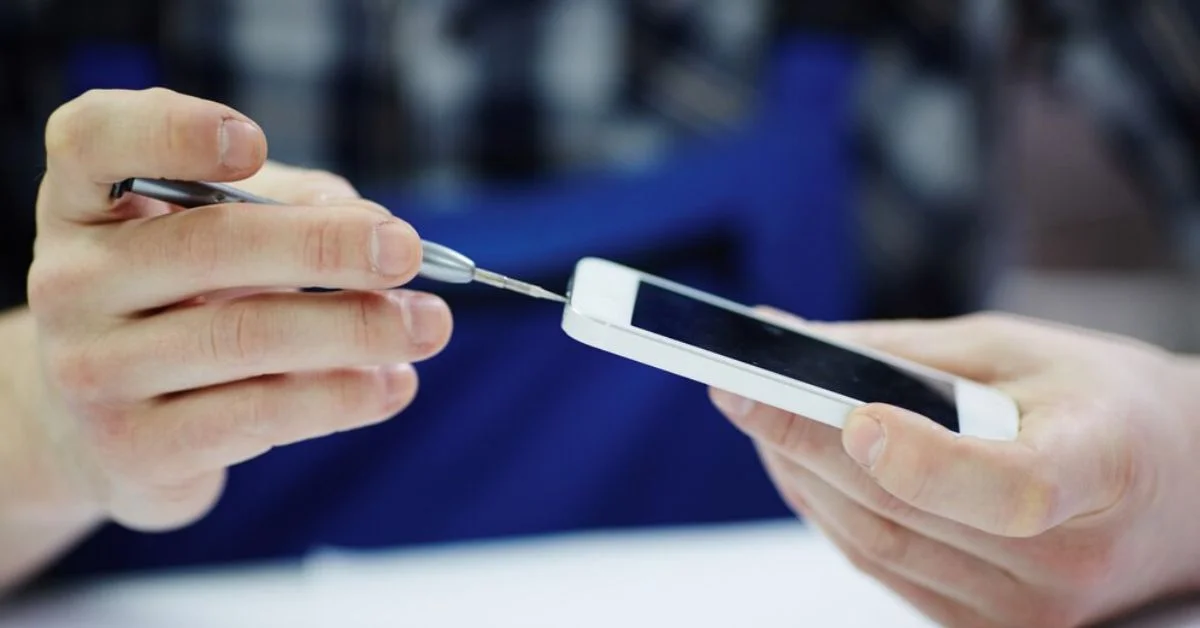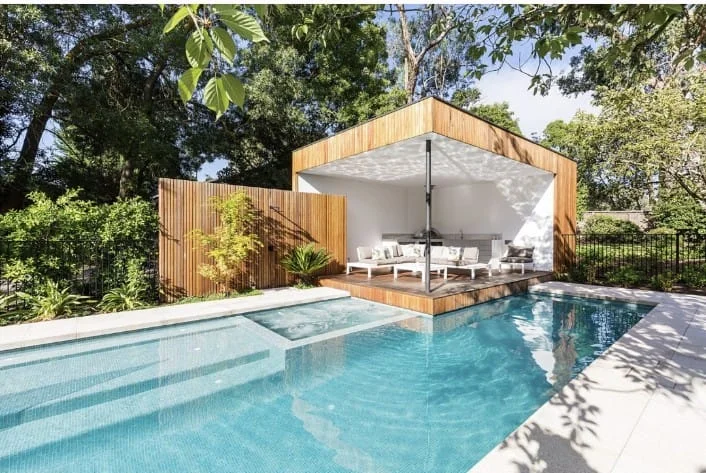GENERAL
HOW HAVE KITCHEN DESIGNS CHANGED OVER TIME in USA?

One of the essential places for design and socializing is the kitchen. In the past, kitchen designs have been transformed into sleek and elegant designs as time passes. For centuries, the kitchen was a place of gathering friends and family in America where people feel love and comfort. The home decor outlet keeps the transformation in mind to provide people with furniture pieces that are traditional, contemporary, and nostalgic. If you want to understand the kitchen design in detail, you should consider its history and how it transformed with time.
1920s–1930s: Designing Life to Face It
In the 1920s and 1930s, our design vocabulary also moved from the curved, decorative, and round forms of the late Victorian and Edwardian periods to more sleek and simple lines. Art Deco stood as the most popular in this style, which could be seen clearly in the skyscrapers of New York. On the other hand, most American homeowners owned modest houses, so one would wonder how to put Art Deco elements with the dynamic design well known for.
During this period, kitchens were tiled more because tiling both on floors and walls was made of more use. Like with the approach aiming to keep away dirt in restrooms, tiles were allowed to get wiped off easily, unlike wood because they were non-absorbents. Decorative flooring helped make homes a canvas for Art Deco sentiments.
The flair for geometrical shapes thus evolved among homeowners. Linoleum flooring offered the public a way to add creativity to previously dull hardwoods produced as industrially as possible. Checkers were the most popular pattern, but in the 1930s, the style became more abstract– angular patterns with fun colors.
1940s–1960s: Atomic-era Innovations
Although some of the 1940s conservatism might have remained, the era of the Atomic Age nonetheless brought a regeneration in the social life of families as they began to live the glamorous dream of 1940s Europe. This led to the replacement of the staid styling of the past with much more in-fashion avante-garde patterns such as starbursts, boomerangs, and explores
We were already living in the future, and forms of midcentury kitchens are heavily associated with, i.e., light-colored wood (blonde) cabinetry, Formica countertops, and L-shaped drawer pulls. Again, to the forefront was the latest appliance and technology not to be kept away in the cupboards. Instead, it had to be on show.
1970s: Over-the-top Kitchen
Homeowners did not have many appliances and technology in the 1970s, which were the main issues. Instead of the kitchen being the place to relax with friends, it is now a source of competition and trying to outdo each other in terms of who makes the best dish. In culinary terms, kitschy kitchens of the ’70s were the embodiment of a delicious casserole: pleasant and cozy, only to help, minus any boredom.
1980s–1990s: Post-modern in the City
In the 1980s, when the postmodernism movement was at its peak, these styles started gaining popularity. You can usually see them combining them with the loft-style apartments of cities such as Los Angeles and NYC. In addition to technology advancing at a high speed, the kitchens were to be “edgy” and reasonably new as domestic gastronomy was getting its new intensity.
2000s–2010s: One’s Own Island
A key feature of kitchens in the 2000s and 2010s was their expansion because the homes were coming in much larger sizes, and they were physically able to accommodate more. Islands, as such connect the areas of displaying extended countertop space and making a decision for sitting at the table or in the glossy hideaway.
For a while, it seemed those stainless steel appliances were the only acceptable colorways one could own, and at first, they used to appear very futuristic and glossy. Still, after some time, they were pitiable and always could be seen with some kind of dent. And you know, it even dispensed water with ice!
Contemporary Trends
In the 21st century, kitchen designs have continued to adapt to the new way of living, environmental issues, and technological advances. Consumers tend to prefer goods rich in sustainable materials such as bamboo, cork, or hemp, as well as energy-efficient appliances and smart home devices to preserve house energy and the environment.
Also, modern kitchens are characterized by clean, simple, and functional aesthetics, well-designed storage solutions, and multipurpose islands that are used for cooking, eating, and socializing.
The Future of Kitchen Design
As we look to the future, kitchen design is sure to follow the changes to stay relevant to the evolving needs and tastes of today’s homeowners. Thanks to robotics, artificial intelligence, and 3D printing know-how, the field of innovation has no boundaries. Kitchens of Tomorrow, powered by concepts like modular kitchen layout, custom-built appliances, and interactive cooking installations, will be multi-purpose and satisfying not just for cooking but also for the people using it.
GENERAL
The Ultimate Guide to iPhone Screen Replacement in Dubai

Isn’t it frustrating when you need iphone repairs in dubai? iPhones are renowned for their durability, sleek design, and high tech features. However, accidents happen, and screens can get cracked or damaged. When this occurs, it’s vital to have it repaired by a trusted professional. Fret not, we’ve got you covered! This guide will walk you through the steps to ensure your iPhone screen is replaced effectively and professionally in Dubai.
Determine the extent of the damages
First, it’s essential to understand the extent of the damage to your iPhone screen. It could range from a minor crack that doesn’t impede your interface with the phone to severe damage that makes it almost impossible to use your device. Comprehensive knowledge of the harm helps in deciding the best next step for your iPhone repairs.
Backup your data
Before you hand over your device to anyone for repairs, always ensure you’ve backed up every essential data. iPhones offer different options for this; you can backup your data directly to your iCloud or iTunes on your computer.
Choose a credible repair service
Choosing a credible repair service is crucial to ensure quality work. Not all repair services are proficient with iPhones, and even fewer specialize in screen replacements. Therefore, make sure you select a repair service experienced with iPhone repairs for the best results.
Cost of iPhone screen replacement in Dubai
Typically, the cost of an iPhone screen repair or replacement can range depending on the model of your iPhone and the extent of the damage. It’s advisable to call several shops and compare prices before deciding who will fix your phone. However, remember that cost should not compromise the quality of the repair.
Repairing Time
The time it takes to repair your iPhone screen depends on the extent of the damage and the business of the repair centre. Some centres offer one-day service, but this could be longer if the damage to your phone is quite extensive.
After Repair Care
Lastly, after your iPhone screen is replaced, it’s important that you take care not to repeat the same mistakes that led to the damage initially. Invest in a sturdy phone case or a screen protector to avoid future accidents. In conclusion, dealing with a damaged iPhone screen can be frustrating. However, with proper guidance and reputable options for iPhone repairs in Dubai, the process can be smooth and worry-free. Just remember to backup and protect your phone to ensure its lifespan.
GENERAL
Keeping Cool in Passaic: Expert AC Repair and HVAC Services

Summer in Passaic, NJ, can be delightful, but when the temperatures start climbing, the last thing you want is an air conditioner that decides to take a break. Whether you’re chilling in your backyard or trying to escape the heat indoors, a fully functional AC is crucial for your comfort. That’s why understanding your options for AC repair and HVAC services in Passaic is key to enjoying the summer without a sweat.
The Heat Is On: Why Good AC Matters
As anyone in Passaic will tell you, July and August can get particularly steamy, with temperatures soaring into the high 80s or even 90s. In this heat, an air conditioner isn’t just about comfort; it’s about safety. The elderly, young children and pets are all at higher risk when the mercury rises, making a reliable AC system a critical part of your home.
But what happens when your AC starts blowing warm air, making strange noises, or, worse, stopping working altogether? That’s when knowing a bit about AC repair in Passaic, NJ, becomes essential.
Understanding Common AC Issues
Familiarizing yourself with common air conditioner problems can help you diagnose issues and communicate more effectively with service technicians. Here are a few issues many homeowners face:
- Low Refrigerant: If your AC isn’t cooling properly, it might be low on refrigerant. This could be due to leaks in the system.
- Dirty Condenser Coils: Your AC’s condenser coils, part of the outdoor unit, need to be clean to expel hot air outside. When they get dirty, the system has to work harder, which can lead to wear and tear.
- Fan Problems: The fan that cools your compressor could be faulty, leading to poor airflow and other complications.
For any of these issues, consulting with professionals like those at EcoComfort Heating & Cooling, who are experienced in handling AC repair in Passaic, NJ, is advisable. They understand local climate challenges and how they can impact your HVAC system’s effectiveness and lifespan.
When to Call the Pros
While some minor issues like replacing a dirty filter can be DIY, there are times when you need to call in the experts:
- Strange Noises: Any grinding, squealing, or chattering from your AC unit is not normal and should be checked by a professional.
- Ice on Compressor: Ice buildup can be a sign of airflow issues or refrigerant leaks.
- High Energy Bills: If your bills are rising and you haven’t changed your usage habits, your AC system might be losing efficiency and need a check-up.
Professionals in HVAC services in Passaic not only fix problems but also provide preventative maintenance that can save you money and extend the life of your unit.
The Benefits of Regular Maintenance
Maintaining your AC isn’t just about fixing problems as they arise. Preventative maintenance is crucial and can provide the following benefits:
- Enhanced Efficiency: Regular maintenance ensures your AC operates at peak efficiency, which can significantly lower your energy bills.
- Extended Equipment Lifespan: Routine check-ups can extend the life of your HVAC system, delaying the need for costly replacements.
- Improved Air Quality: Clean systems filter your home’s air better, which is particularly important for those with allergies or respiratory issues.
Stay Cool and Collected
As we wrap up, remember that staying cool during the Passaic summer isn’t just about comfort—it’s about quality of life. Ensuring your air conditioning system is functioning properly not only keeps you and your family cool but also safe during the dog days of summer. Whether you’re looking for preventative maintenance or need urgent AC repair in Passaic, NJ, turning to trusted professionals like those at EcoComfort Heating & Cooling can make all the difference.
Don’t wait until the summer heat hits to find out your air conditioning isn’t up to the task. Take proactive steps today to ensure your home remains a cool sanctuary, no matter what the weather outside brings.
GENERAL
Dive In Style: Expert Guide to Swimming Pool Installation

Everyone is attracted to a sparkling swimming pool, and in their backyard oasis, they have built a lounging site in preparation for approaching the warmth of summer.
There is always a need for careful pool installations to have envisioning and recreation wimming sites. In this guide, I Will take you through important considerations for professional swimming pool installation. These steps can transform your backyard into a luxurious place for everyone. Dive in style and enjoy the comfort of your own private refreshing Oasis.
The Initial Step is Planning.
A careful plan is essential before diving into the installation process. Every aspect of the project needs a prior plan; the plan starts with assessing the backyard space and considering other factors like shape, location, and size for maximum accessibility and sunlight. Moreover, consulting professional pool designers and contractors is important to help visualise the results by providing valuable insights.
The Second Step is Budgeting.
Cost can vary based on additional features like landscaping, building materials, pool sizes, and site preparation requirements. A realistic budget is essential for a successful installation before setting up a pool.
The Third Step is Determining the Right Pool Type.
Every swimming pool type has its aesthetics and advantages, requiring consideration. Natural pool types are designed to mimic the look and feel of a pond; they use biological filters to maintain water quality without chemicals; hence, they are eco-conscious and are mostly built by individuals seeking sustainable options for above-ground pool types. It is easy to install and dismantle when needed and ideal for space and cost-conscious individuals. Lastly, in-ground pool types are made of various materials, each with unique characteristics; they offer seamless integration with the backyard landscape.
The Fourth Step is Permits and Regulations.
There is a need to ensure you comply with local regulations before installing a swimming pool. Some of their permits are fencing to ensure Safety and adherence to zoning laws, electric work, and permits for excavation. Contractors or local authorities can help navigate the permitting process smoothly.
The Fifth Process is the Installation Process.
The construction phase can begin once all permits are secured. Installation starts with excavations, where there is a need to clear designated sites and dig the pool hole to your desired shape and size. Next is setting up the structure, where you use chosen materials for ground and above-ground construction; materials may range from fibreglass, concrete, or assembled panels. Besides, electric and plumbing work is set based on safety regulations and industry standards; finally, desired features such as a diving board, slides, or waterfalls are added to the pool, and pool finishes such as tiles or plasters are made.
Final Step
Finally, the pool needs regular care and maintenance. Proper care makes the pool enjoyable and lasts longer. Detail maintenance is done by cleaning, where walls are brushed to prevent algae growth, vacuum debris, skimming the surface, and maintaining a pristine appearance. Water is balanced and tested by monitoring its chemical level to maintain its sanity and clarity. Tools are also inspected where servicing pumps and other equipment are maintained to ensure performance efficiency.
Conclusion
The swimming pool installation journey needs meticulous plans, compliance with regulations, and budgeting. Every swimming pool type has its considerations and benefits; by entrusting the project to skilled personnel and keeping close maintenance, we can bring a captivating backyard haven for recreation and relaxation that will yield a stunning aquatic retreat forever.

 ENTERTAINMENT4 days ago
ENTERTAINMENT4 days agoExploring the Kristen Archives: A Treasure Trove of Erotica and More

 ENTERTAINMENT1 day ago
ENTERTAINMENT1 day agoKiss KH: The Streaming Platform Redefining Digital Engagement and Cultural Currents

 EDUCATION1 day ago
EDUCATION1 day agoLingrohub Platform: A Complete Student Access Guide

 LIFESTYLE4 months ago
LIFESTYLE4 months agoThe Disciplinary Wives Club: Spanking for Love, Not Punishment

 TECHNOLOGY4 months ago
TECHNOLOGY4 months agoBlog Arcy Art: Where Architecture Meets Art

 TECHNOLOGY1 day ago
TECHNOLOGY1 day agoCasibom: The Digital Alchemy Reshaping Systems, Society, and Self

 TECHNOLOGY24 hours ago
TECHNOLOGY24 hours agoSecuring Your Online Presence: The Ultimate Guide to Buying an SSL Certificate

 BUSINESS24 hours ago
BUSINESS24 hours agoDiversifying Your Portfolio: The Key to Successful Investing in Portland, Oregon










